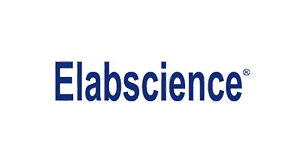Recombinant Porcine OPN/Osteopontin protein (His tag)
Recombinant Porcine OPN/Osteopontin protein (His tag)
Artikelnummer
ELSPDEP100009-500
Verpackungseinheit
500μg
Hersteller
Elabscience Biotechnology
Verfügbarkeit:
wird geladen...
Preis wird geladen...
Special promotion: Enjoy a 10% discount on Elabscience recombinant proteins through September 30, 2025.
Promo code: ELABPQ3
No additional discounts available during this period.
Uniprot: P14287
Accession: P14287
Background: Osteopontin (OPN, previously also referred to as transformation-associated secreted phosphoprotein, bone sialoprotein I, 2ar, 2B7, early T lymphocyte activation 1 protein, minopotin, calcium oxalate crystal growth inhibitor protein), is a secreted, highly acidic, calcium-binding, RGD-containing, phosphorylated glycoprotein originally isolated from bone matrix. Subsequently, OPN has been found in kidney, placenta, blood vessels and various tumor tissues. Many cell types (including macrophages, osteoclasts, activated T cells, fibroblasts, epithelial cells, vascular smooth muscle cells, and natural killer cells) can express OPN in response to activation by cytokines, growth factors or inflammatory mediators. Elevated expression of OPN has also been associated with numerous pathobiological conditions such as atherosclerotic plaques, renal tubulointerstitial fibrosis, granuloma formations in tuberculosis and silicosis, neointimal formation associated with balloon catheterization, metastasizing tumors, and cerebral ischemia. Functionally, OPN is chemotactic for macrophages, smooth muscle cells, endothelial cells and glial cells. OPN has also been shown to inhibit nitric oxide production and cytotoxicity by activated macrophages. Human, mouse, rat, pig and bovine OPN share from approximately 40-80% amino acid sequence identity. Osteopontin is a substrate for proteolytic cleavage by thrombin, enterokinase, MMP-3 and MMP-7. The functions of OPN in a variety of cell types were shown to be modified as a result of proteolytic cleavage.
Bio Acitivity: Not validated for activity
Sequence: Leu 17-Asn 303
Purity: > 95% as determined by reducing SDS-PAGE.
Formulation: Lyophilized from sterile PBS, pH 7.4.
Normally 5%-8% trehalose, mannitol and 0.01% Tween 80 are added as protectants before lyophilization.
Please refer to the specific buffer information in the printed manual.
Reconstitution: It is recommended that sterile water be added to the vial to prepare a stock solution of 0.5 mg/mL. Concentration is measured by UV-Vis.
Endotoxin: < 10 EU/mg of the protein as determined by the LAL method.
Calculated MW: 31.5 kDa
Observed MW: 24 kDa
| Artikelnummer | ELSPDEP100009-500 |
|---|---|
| Hersteller | Elabscience Biotechnology |
| Hersteller Artikelnummer | PDEP100009-500 |
| Verpackungseinheit | 500μg |
| Mengeneinheit | STK |
| Produktinformation (PDF) |
|
| MSDS (PDF) |
|

 English
English










